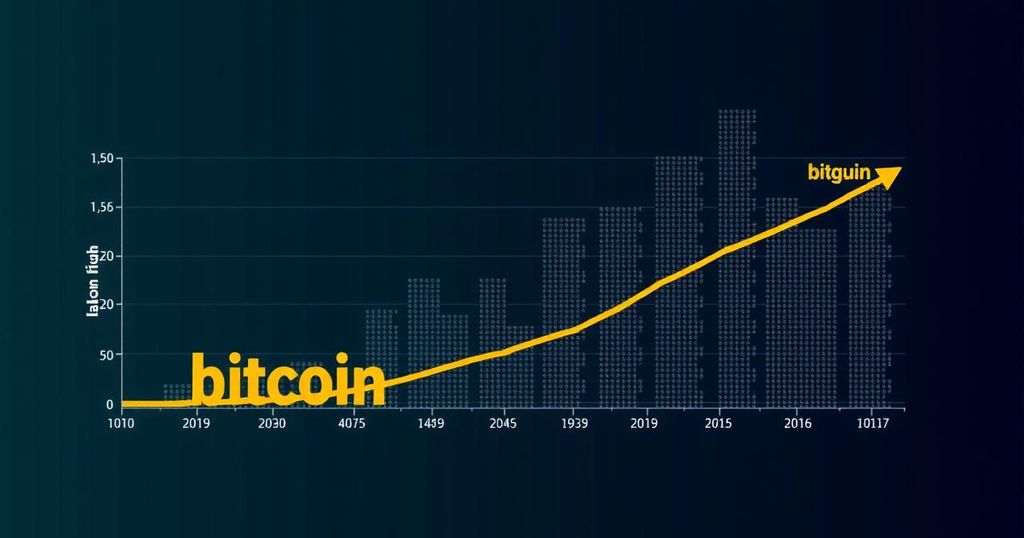The Future of Bitcoin: A $52 Million Asset or a Zero-Dollar Pitfall?
As we navigate the first quarter of the 21st century, the financial landscape is undergoing considerable transformations, most notably marked by the rise of cryptocurrencies, with Bitcoin at the forefront. The question that looms as we look towards 2050 is: will Bitcoin solidify its position as a cornerstone of global finance, or could it potentially dwindle into obscurity? This discourse will explore projections concerning Bitcoin’s value in the year 2050, which range from an astonishing $52 million to a catastrophic drop to zero, as well as the influential factors contributing to these contrasting forecasts.
Bitcoin, recognized as the world’s premier decentralized cryptocurrency, has significantly disrupted traditional financial systems. Currently valued at approximately $55,862 as of August 6, 2024, Bitcoin continues to garner traction as digital assets gain wider acceptance. Various analysts propose vastly different potential trajectories for Bitcoin’s future value. For instance, analysis by VanEck’s Digital Assets Research Team presents a base case scenario suggesting a valuation of $2.9 million, with a more optimistic scenario projecting a peak value of $52 million by 2050. Examining the rationales behind these bullish forecasts sheds light on Bitcoin’s potential rise.
VanEck attributes its optimistic projections to the expectation that Bitcoin will evolve into a pivotal global reserve currency. They foresee Bitcoin facilitating approximately ten percent of international trade transactions and five percent of domestic trade by 2050, alongside a prediction that central banks may include 2.5% of their assets in Bitcoin. Key elements propelling this anticipated growth include:
1. **Transformation in International Monetary Systems (IMS)**: VanEck suggests that the current dominance of the US dollar in global finance may be waning. Recent data indicates a sustained 61% share of cross-border payments by the US dollar, juxtaposed against decreasing shares for currencies like the euro and yen. This shift could position Bitcoin as an alternative to traditional reserve currencies.
2. **De-dollarization Trends**: Evidence of de-dollarization is emerging, driven by factors including rising costs of the US dollar for emerging markets and geopolitical dynamics, particularly influenced by conflicts such as the Russia-Ukraine war. Countries are increasingly favoring the Renminbi and local currencies over the dollar, paving the way for other forms of currency to gain traction.
3. **Emerging Role of Bitcoin**: In light of these shifting dynamics, VanEck posits that Bitcoin might fill the void left by traditional reserves, potentially capturing significant value in future financial frameworks.
Thus, VanEck’s projections hinge upon variables like Bitcoin’s velocity, the GDP tied to Bitcoin transactions, and the volume of Bitcoin in circulation. Their analysis outlines a scenario where Bitcoin attains immense market penetration, capturing substantial global financial market share.
Conversely, while some experts envision a robust future for Bitcoin, a notable faction holds a contrasting perspective, predicting a bleak future where Bitcoin collapses to zero. Influential voices such as Jim Rogers and Charlie Munger express profound skepticism. Rogers, a seasoned investor, contends that Bitcoin lacks intrinsic value compared to tangible commodities, reflecting societal distrust towards digital currencies. Similarly, Munger posits that Bitcoin risks undermining established financial systems and may ultimately descend into irrelevance.
Moreover, external economic and regulatory challenges present substantial hurdles. Increased regulatory scrutiny could stifle Bitcoin’s growth and acceptance, while the advent of Central Bank Digital Currencies (CBDCs) could overshadow Bitcoin in markets that prefer government-backed alternatives. Furthermore, Bitcoin’s notorious volatility and scalability concerns remain critical barriers to its widespread adoption.
In summation, the possibilities of Bitcoin reaching a staggering $52 million valuation or plummeting to zero underscore the inherent uncertainties within the cryptocurrency sphere. Bitcoin has demonstrated resilience throughout various market fluctuations; nevertheless, it is imperative to recognize its speculative nature and the influence of investor sentiment. While the bullish forecasts hinge on optimistic adoption metrics, the counterarguments foresee potential collapses, albeit these dire predictions have been a common refrain throughout Bitcoin’s history.
Ultimately, a balanced approach is advisable for investors. Both optimistic and pessimistic crypto outlooks merit scrutiny and should be analyzed with care. Diversification, risk assessment, and reliance on credible, data-driven insights are fundamental elements for navigating the complexities of cryptocurrency investment. The unpredictability of assets like Bitcoin necessitates caution and informed decision-making.








Post Comment